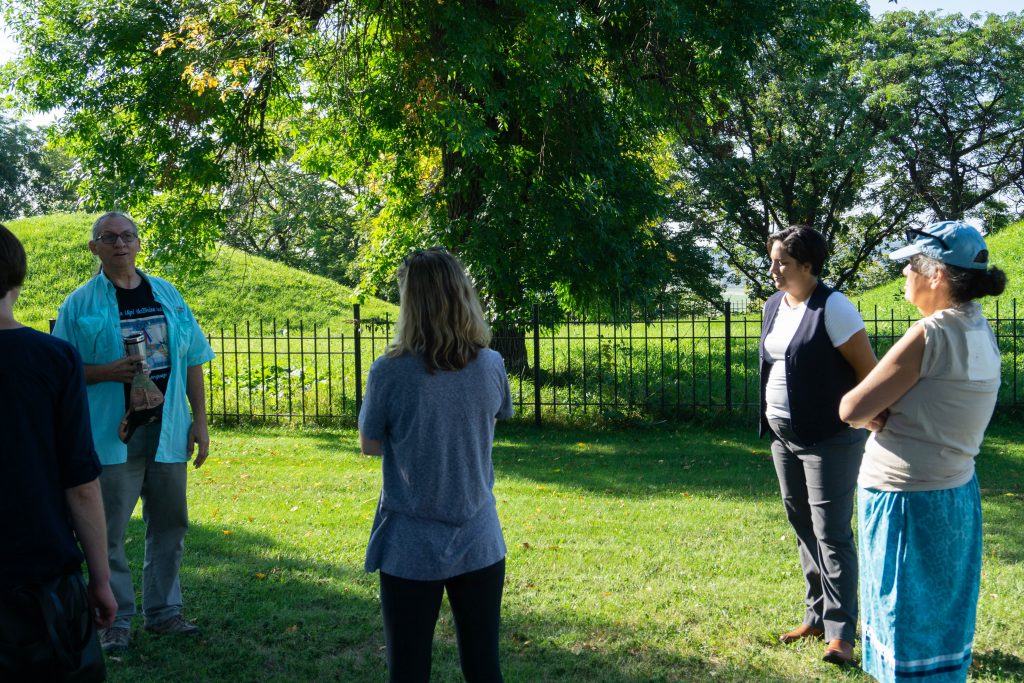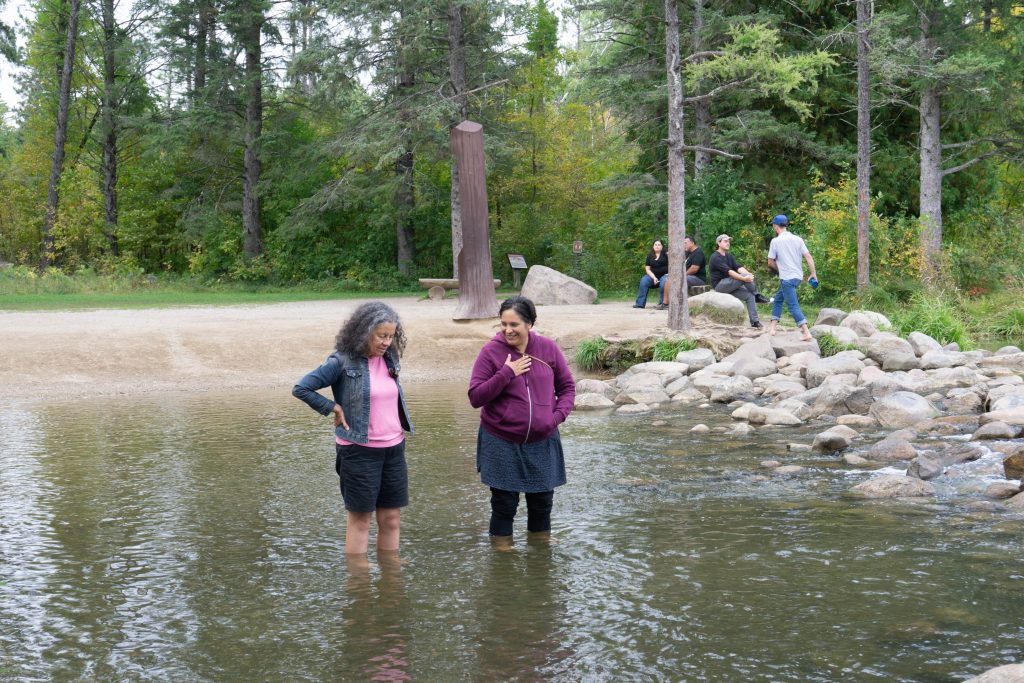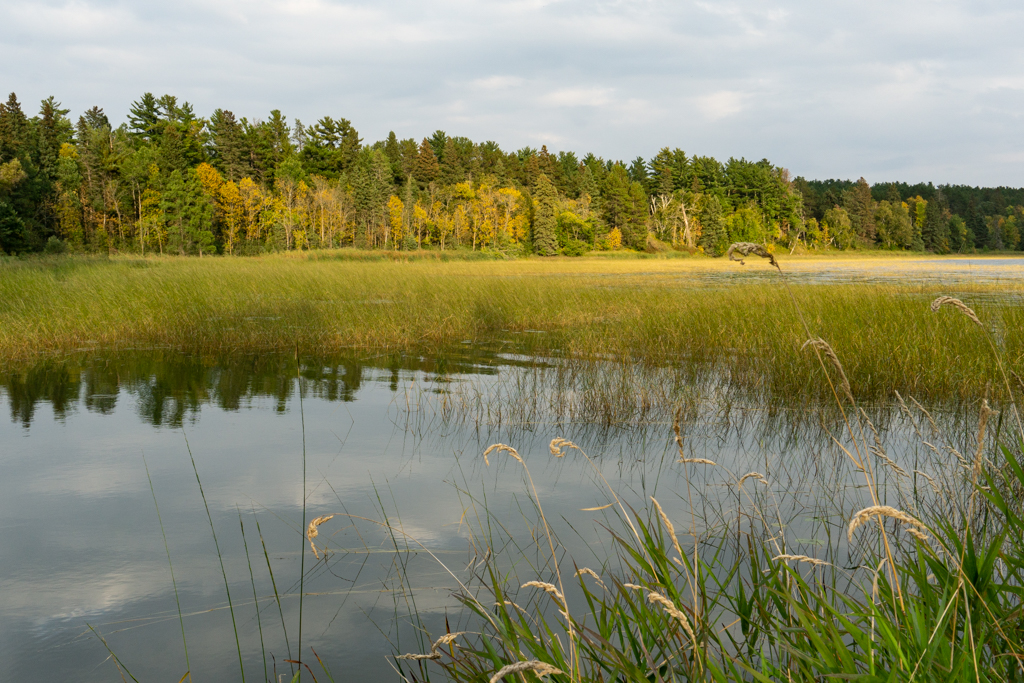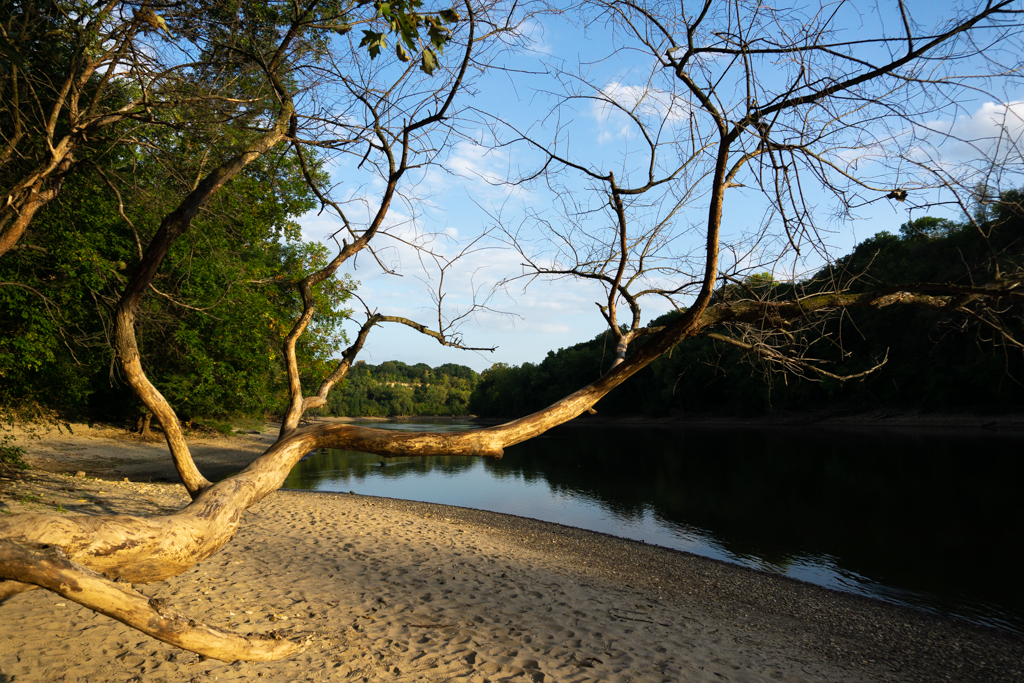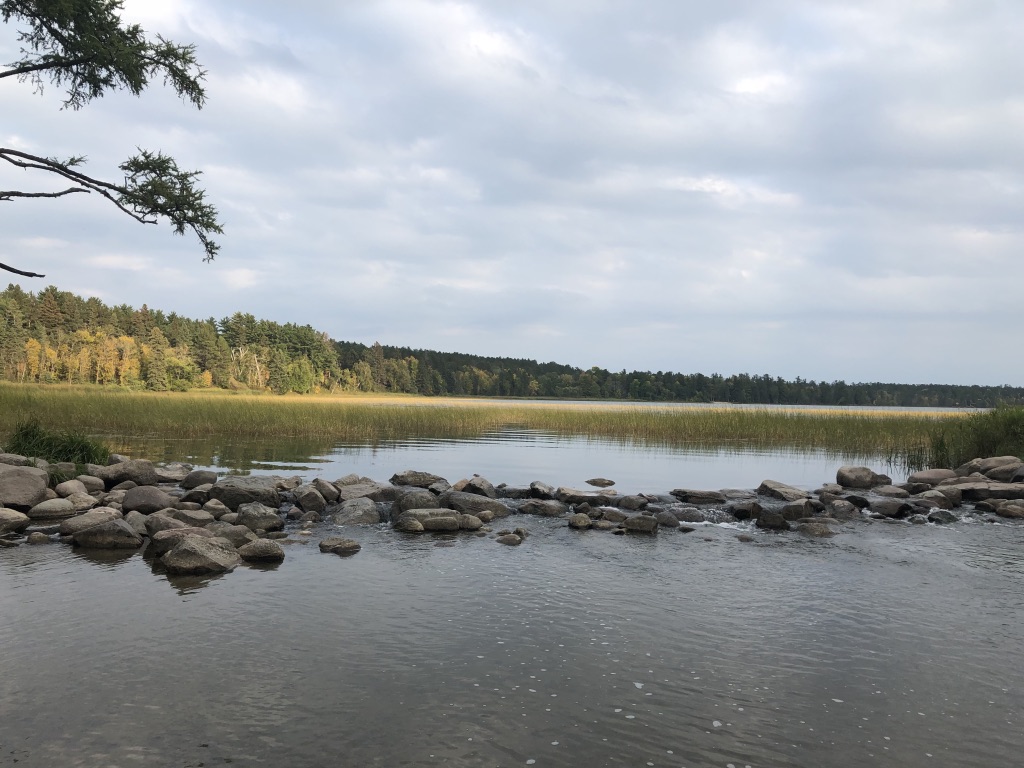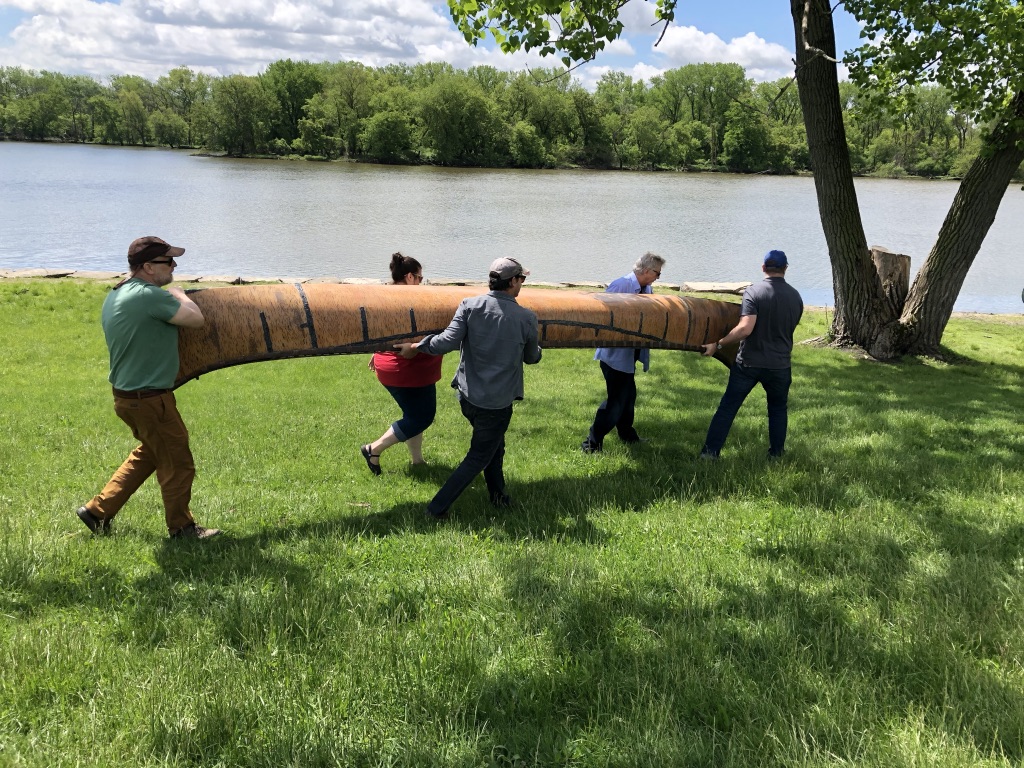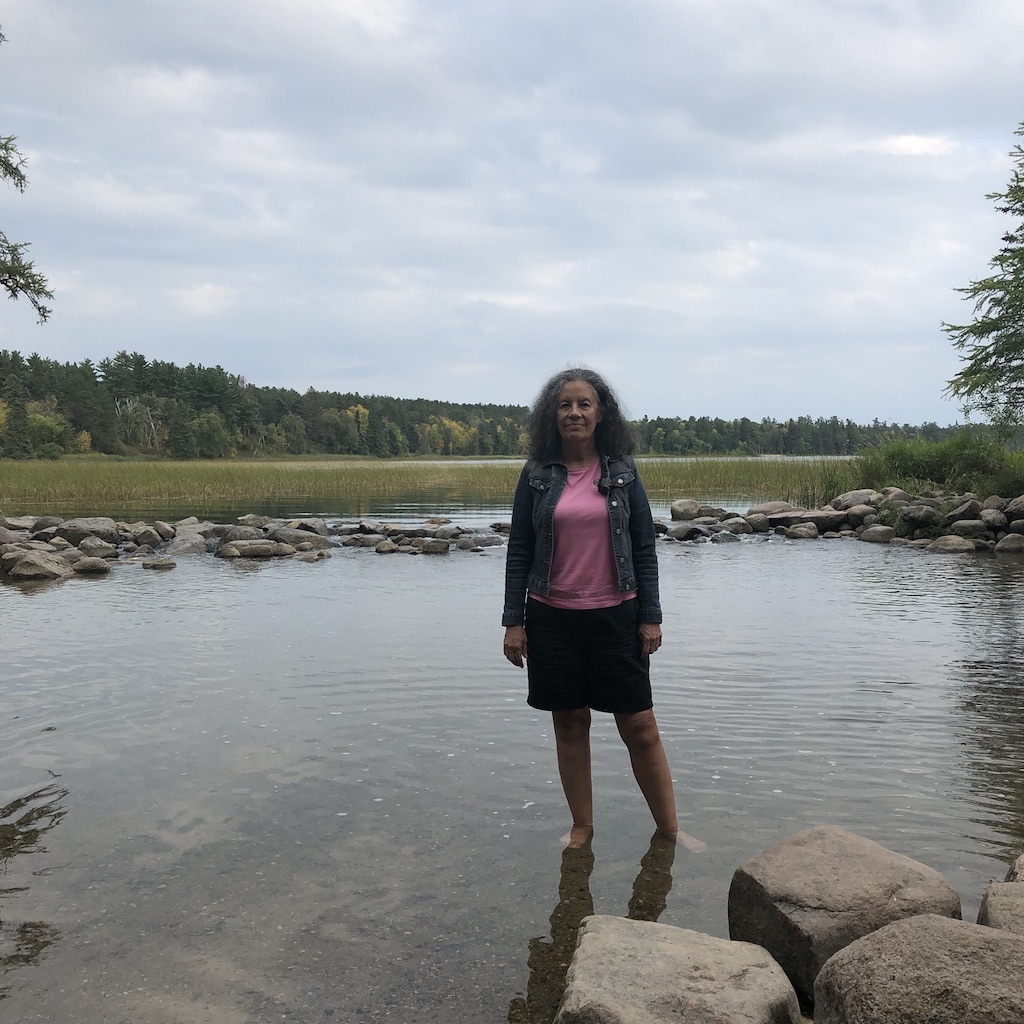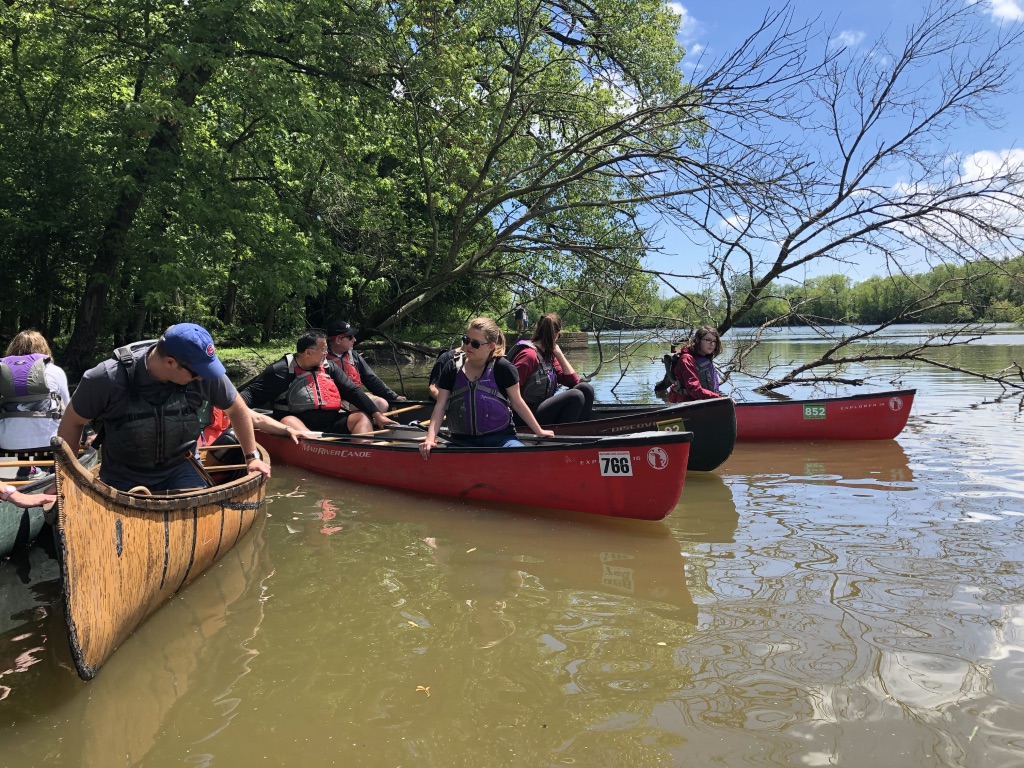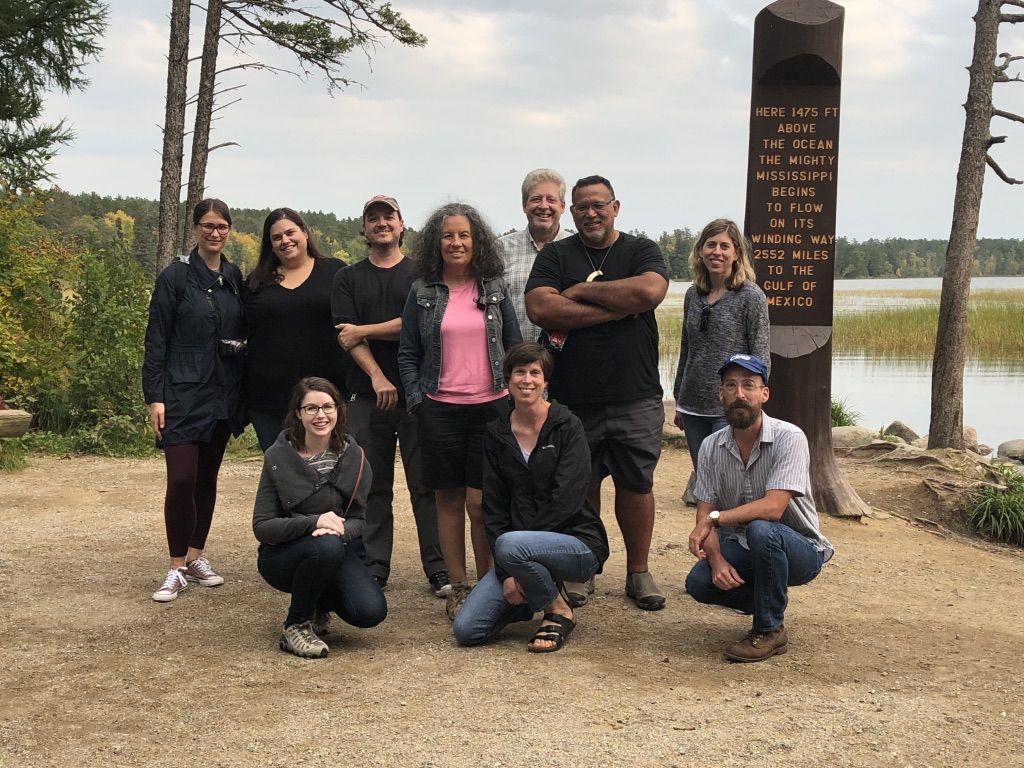Contributions from the “Indigenous Art and Activism in Changing Climates” Project
This article is republished from Open Rivers: Rethinking Water, Place & Community under a Creative Commons license (CC BY-NC 4.0). You can find the original article here: https://openrivers.lib.umn.edu/article/indigenizing-environmental-thinking/
The Mississippi River has always facilitated currents of trade, activism, art, and research as a site of constant cultural, environmental, and political exchange. As a collective of graduate students and junior faculty, and as members of the Mellon Foundation Humanities Without Walls (HWW) project, “Indigenous Art and Activism in Changing Climates: The Mississippi Valley, Colonialism, and Climate Change,” we bring together responses to the Open Rivers prompt that foreground collaborative and interdisciplinary approaches and highlight multidimensional understandings of Indigenous relationally with the river and its tributaries. Project participants came from six different institutions and we met as a group at sites from the headwaters of the Mississippi to the Gulf, reading scholarly and creative texts about these places while prioritizing embodied, experiential research methods—from canoeing, to visiting Indigenous earthworks, and hearing from and working with Indigenous artists and community members. Over two years of gathering along the river and researching, we have generated individual and collective questions about the Mississippi that connect Indigenous engagements with the river to thinking through decolonizing methodologies and global environmental challenges: What confluences have emerged between Indigenous research, art, and activism in the context of the river? What does “humanities without walls” mean in the context of Indigenous Studies? How are particular Indigenous river histories made visible by collaborative practices and pedagogies of art and activism? As part of our emphasis on team-based research, our responses to these questions regarding environmental stewardship, place, and community are developed in conversation with each other and, much like a river’s tributaries, take shared waters in different directions.
Samantha Majhor
River networks sprawl and span across our homelands, sustaining life and carrying it to connect through other water systems across the globe. This is part of the understanding that reverberates from the D/Lakhóta phrase “mní wichóni”—water is life. Native American and Indigenous Studies (NAIS) is like the river in this way, in its methods and in the way NAIS scholars focus on relations and relationality. I often think that NAIS methodologies work as a bridge between the silos of knowledge that academia tends to produce: arts and sciences, trade and design, business and agriculture. Indigenous knowledges and methodologies point us toward the networking, the relationships, and the maintenance of relationships between humans and other-than-humans, and NAIS methodologies ask us to focus on these relationships by attending to relational networks situated in place. No one person, people, city, state, or nation can put humans on the track to reaffirming our responsibilities to the river; its expanse reaches beyond these other bodies. Here, in Mnisóta Makóče, we tend to call the river ḢaḢá Wakpá in the Dakhóta language—river of the falls. This is not what all Dakhóta people call this river all the time, but where I am now, just north of Minneapolis/St. Paul, this is the name that gets used most often because this is where one will find waterfalls along the Mississippi. The name attends to the river’s particular features in this spot. The river has many other names, names dictated by other relationships with and observations of the river, depending on one’s place along the river and its tributaries. NAIS methodology suggests that one get to know the river in a multivalent way and embark on a reciprocal relationship that lives in place but, inevitably, ripples downstream.
Sara Černe
The collaborative nature of the project and the Indigenous artists and activists we met during our site visits to the Upper and the Lower Mississippi made evident the importance of the local in addressing global environmental concerns. The experience underscored the necessity of considering longer historical perspectives within particular spaces—of going deep while remaining rooted in place—all to better understand broad issues that transcend and connect specific local geographies. For me, embodied engagement with places and histories along the river made concrete the abstract notions of dispossession and extraction, processes that take place across the river valley as well as nationally and globally. Conversations with Jim Rock, Director of Indigenous Programming at the Alworth Planetarium at the University of Minnesota Duluth, for instance, highlighted the longevity and relational geography of Native mounds in the Mississippi’s watershed. Disregarding Dakota traditions developed in relation to this space, the relatively recent settler activity of the nineteenth and twentieth centuries destroyed many sacred sites in the greater Minneapolis area such as Wakan Tipi and Spirit Island. This was done in the name of Western progress and (over)development, a mentality that disrupts local ecologies and causes a chain of devastating consequences. While it is common for younger students to engage in place-based learning, higher education seems to devalue the method. If we wish to collectively unlearn some of the practices and mindsets that led to the age of Great Acceleration, we could do worse than to make relationality, accountability, and sustainability crucial to humanistic education, anchoring and modeling these values in local environments.
Bonnie Etherington
In Minneapolis in 2018 our Humanities Without Walls group had the privilege of hearing from Nibi (water) walker Sharon Day (Anishinaabe) who described how she along with other Nibi walkers journeyed from the headwaters of the Mississippi River to the Gulf, carrying the clean water with them to “remind the water” in the Gulf what it once was. This action compelled thinking about what the river carries and is shaped by as it travels toward the ocean, what the waters leave behind, and what they accumulate in their passage. Shipping traffic carries oil and other goods upriver. Corn, beans, wheat, and more flow out, and the waters bear with them currents of silt, nitrates, and other forms of pollution. At the same time that the accumulation of sediment is critical for resisting land loss in the Louisiana Delta and sustaining complex river-ocean ecosystems, nitrates trigger growing dead zones in the ocean and rising seas inundate entire communities near the river mouth. Actions such as Day’s Nibi walks indicate that conversations about Indigenous sovereignty and water rights up and down the river and its tributaries do not exist in isolation from each other. We can only address issues down river (such as land loss) and their impacts on multi-being populations when also considering issues upriver (such as levee or pipeline building), and vice versa. This kind of thinking (or walking) with the river also suggests that lasting and equitable solutions to the environmental issues faced by Indigenous peoples with relationships to the Mississippi must contend with histories of settler colonialism and extractive capitalism at local, national, and global scales.
Andrew M. Freiman
In 2019 we met in Oxford, Mississippi with filmmaker Monique Verdin (Houma) and visual artist Sarah Sense (Chitimacha) to discuss Indigenous art, activism, and the loss of Indigenous land in the Louisiana Delta. Levee systems and sea walls along the Lower Mississippi have reduced sedimentation, while canals built by the petroleum industry have killed wetlands through saltwater intrusion. For Indigenous communities, losing land means losing life itself. Our conversations made it clear that the practices of settler colonialism are still in operation. Indigenous land is being overtaken by the petrochemical industry that sees the land simply as a “sacrifice zone” where money can be made quickly, disregarding its historical, social, or religious meaning. Worse still, climate change, the rearguard of American colonialism, is wiping land off the map for good. In 2011, thirty-five place names had to be retired from local maps—they no longer exist. Multiple Indigenous communities are trying to relocate to higher ground, a difficult process further hindered by ignorant and racist federal expectations and recalcitrant local officials. Government-sponsored relocation isn’t a success story, only part of a series of short-term solutions. The Biloxi-Chitimacha-Choctaw of Isle De Jean Charles recently left the relocation program because it left out historical members of the tribe. In order to combat the destructive habits of petroleum extraction, universities could work to divest from fossil fuels and diversify their energy systems, while also working to invest in/support Indigenous artists, thinkers, and elders who are the lifeblood of their cultures’ futures.
Agléška Cohen-Rencountre
My initial thoughts about the prompt focus on settler colonial logics that are made more evident through our collective HWW inquiries that center Indigenous place and ways of knowing. As an Očéti Šakówiƞ dual citizen, I struggle with the question of what Native people contribute to global issues regarding the environmental abuses for profit. The question, which speaks to what Native and Indigenous epistemologies and ontologies offer to a global healing from these politically driven environmental abuses, prioritizes settler acquisition of Native and Indigenous knowledge as the epicenter of that healing. In our current climate, there will continue to be growing interest in Native and Indigenous ecological stewardship and thus Native and Indigenous science. I believe our work as HWW scholars helps to expose settler colonial logics at the roots and lessen the burden placed on Native and Indigenous peoples to compartmentalize trauma. “What might Indigenous ways of knowing offer in order to address these global concerns?” In short, there is no singular Indigenous way of knowing, and therefore the framing of this question itself is derived from a colonial perspective that is embedded within ongoing Native and Indigenous dispossession. So what more can Natives offer when we already give everything?
